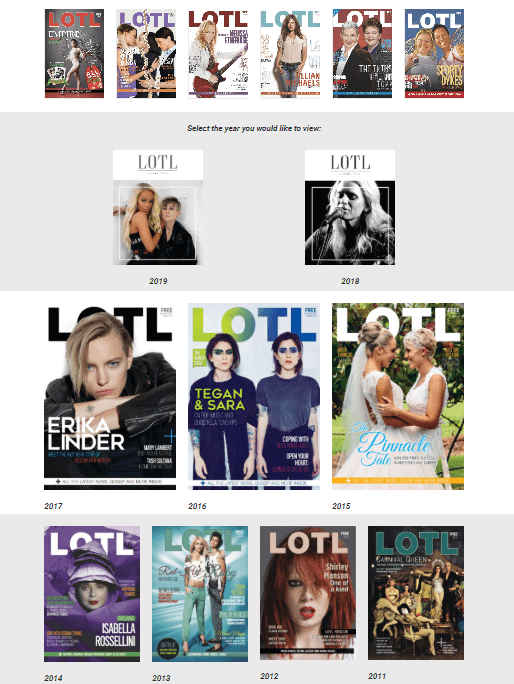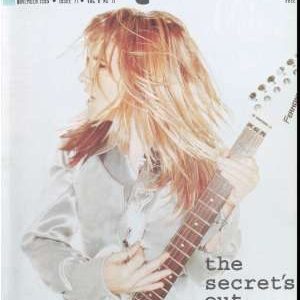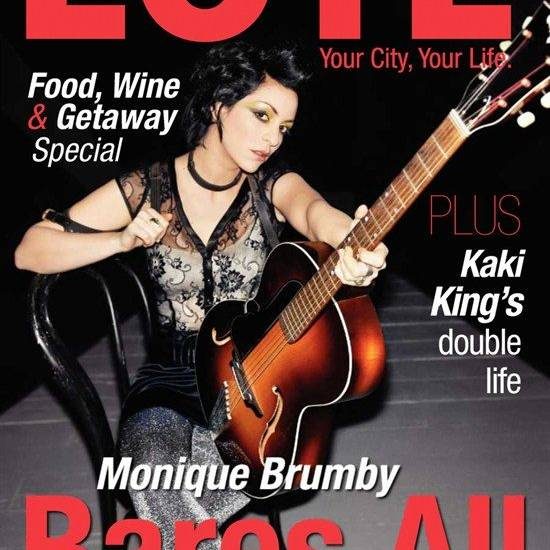 In its almost 30 years on the planet, LOTL has had many firsts.
In its almost 30 years on the planet, LOTL has had many firsts.
In its almost 30 years on the planet, LOTL has had many firsts. The magazine has broken stories about lesbians adopting, celebrities coming outs and the first out lesbian to run for parliament.
It can now add another to its illustrious history – LOTL, or Lesbians on the Loose, as it was originally called, is the first lesbian publication to be digitised on the National Library of Australia’s Trove. There LOTL shares space with historic editions of The Sydney Morning Herald and The Australian Women’s Weekly.
The first issue can be found here with the rest of LOTL’s first five years scheduled to be up by the end of April, and another four years later this year.
Anyone with access to the internet will be able to read any edition in full and the site is fully searchable.
LOTL was very different in its early days to the full-colour quarterly it is now. The first issue, January 1990, was only eight pages with a run of 1000 copies. However, it was an immediate hit with its readers and by the middle of the decade, LOTL was a 60-page monthly with a glossy cover, a run of 20,000 and a national readership of 60,000.
Begun in order to inform lesbians about what activities and services were available for them, the magazine quickly became the journal of record for the local community. A community of lesbian businesses, which suddenly had somewhere to advertise, grew up alongside. Not only were there several lesbian venues but there were lesbian travel agencies, physiotherapists, hairdressers, lawyers, cleaners and counsellors.
Lesbian groups also proliferated with something for everyone. No matter what you were into – belly dancing, golf, soccer or religion – you could find other lesbians who shared your interest. Older lesbians, indigenous lesbians, disabled lesbians, lesbians with cancer and many others formed groups to offer support to one another.
LOTL started as a hobby, but in 1994 I left my job to work on the magazine full-time. Soon after, my partner, Barbara Farrelly, the editor of the Sydney Star Observer, quit her job to join me.
With the two of us working full-time we were able to develop the magazine further. Barbara’s talents as a journalist led to stories on the problems faced by lesbians whose partners had died without a will, teachers who had to keep their partner’s gender secret, and, in an era when relationship recognition was only a dream, the issues faced by lesbian parents and couples where one partner came from another country.
It wasn’t all serious. When a group of lesbians decided to march in Mardi Gras as their TV hero, Xena: Warrior Princess, we put them on the cover – with the real Xena – actor Lucy Lawless. When Susan Harben became the first out lesbian to run for governor, we put her on the steps of Parliament House surrounded by lemons. Sadly she lost the election to Clover Moore.
In 1999 Barbara and I sold LOTL to its current owner Silke Bader. Barbara had developed COPD (Chronic Obstructive Lung Disease) and we moved to cleaner air in the country.
Barbara began a blog about living with her illness, The Departure Lounge. This was eventually archived by Trove’s Pandora as part of its collection of significant websites. LOTL’s website is also archived by Pandora.
After Barbara passed away in 2018 I approached the National Library about the possibility of adding LOTL to its archive of historical Australian newspapers and magazines. Barbara was so proud her blog was archived, I wanted to see more of her work preserved.
As historians are beginning to research the early days of the gay and lesbian community it is important to make the publications from the time accessible. The early editions of Lesbians on the Loose were published during what was to become the “golden era for gay and lesbian magazines”, to paraphrase historian Bill Calder. He wrote about LOTL and the many other publications from the era in his book Pink Ink.
So many of these newspapers and magazines have disappeared since the turn of the century. LOTL and the Sydney Star Observer have been the only two to survive the onslaught of the internet. It’s important that our history is not lost – and now, courtesy of the National Library’s Trove, anyone can read about how life was for lesbians in the 1990s.


